 Religioon
ReligioonРелигия
Religion
 Religioon
Religioon
Against the background of the other two Baltic capitals, the Jewish history of Tallinn looks quite modest. Estonian Jews could never be compared in their numbers and wealth with the Latvians, nor in their religiousness and learnedness with the Lithuanians.
Still we have something to be proud of, namely that Tallinn (at that time Reval) was apparently one of the first port cities of the Baltics, to be discovered by Jews from Western Europe. The first reference to a Jew is in documents from the Tallinn Magistrate which date from 1333: the city was visited by «Johann the Jew», most probably an itinerant medical man.
The stable Jewish population in Tallinn dates back to the first 30 years of the 19th century. The core of the future Tallinn community was formed by the cantonists – Jewish youngsters enrolled in the army of the Tsarist Russia. They started arriving here in 1828.
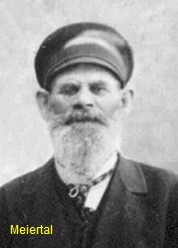
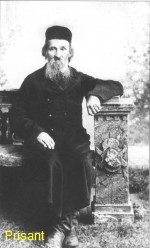
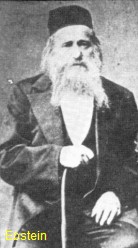
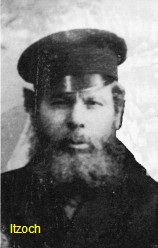 According to some data, they had their own prayer house in Wismari Street as early as the 1830s; in the 1840s there is already a mention of the synagogue in Maakri Street, and of the functions of the
rabbi which were performed by the cantonist Meier Raminovsky. He was officially named the «learned Jew». The position of shokhet was occupied by the cantonist Tosev. Precise data exists proving that birth and death certificates were issued during the 1840s. Unfortunately, the registration books have perished.
According to some data, they had their own prayer house in Wismari Street as early as the 1830s; in the 1840s there is already a mention of the synagogue in Maakri Street, and of the functions of the
rabbi which were performed by the cantonist Meier Raminovsky. He was officially named the «learned Jew». The position of shokhet was occupied by the cantonist Tosev. Precise data exists proving that birth and death certificates were issued during the 1840s. Unfortunately, the registration books have perished.
1856 is the year in which the existence of the Jewish community in Tallinn was officially recognized, which is when it is first had a formal structure. The funeral fraternity «Khevra kaddisha» dates from then, as does the cemetery in Magasini Street, around which the stone fence was built. The soldiers themselves collected the necessary funds. They sold their daily bread ration and other products, and also refused other benefits. They could make no use of the cemetery and the funeral fraternity, since following the termination of their service, they had to leave Tallinn.
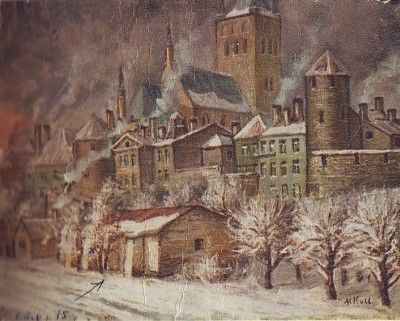 Estonia was not part of the Jewish Pale of the Russian Empire, which meant that the Jews could only settle here with a special permit. The right to settle outside the Jewish Pale was received by the cantonists completing their service, merchants of the first guild (the highest degree of merchants in Tzarist Russia), those with higher education, medium-grade medical personnel, artisans with specific qualifications and their descendants. All this ensured a high educational background of the Jewish population of Estonia.
Estonia was not part of the Jewish Pale of the Russian Empire, which meant that the Jews could only settle here with a special permit. The right to settle outside the Jewish Pale was received by the cantonists completing their service, merchants of the first guild (the highest degree of merchants in Tzarist Russia), those with higher education, medium-grade medical personnel, artisans with specific qualifications and their descendants. All this ensured a high educational background of the Jewish population of Estonia.
In such way, by 1868 the influx of the Jews grew at the expense of local affluent merchants, artisans and people with a university education. The small prayer house of the soldiers’ community in Maakri Street was already too small to accommodate everyone. The military authorities had to be addressed with the request to find a new synagogue. Soon it was opened in the premises of the former gunpowder cellar not far from the barracks, close to the junction of the current streets Juhkentali and Liivalaia. The gunpowder cellar was transferred for the soldiers’ use free of charge, but they had to make enormous efforts before the premises had a decent appearance.
The Jewish artisans and tradesmen did not like the new prayer house of the retired soldiers. It was far away from the city and could not accommodate the entire congregation, although it was larger than the former synagogue in Maakri Street. The artisans and tradesmen addressed the Riga Governor-General Suvorov, with the request to allow them to lease premises for the synagogue in Müürivahe Street. This request was also supported by the Jewish entrepreneurs, who were involved in large numbers in Tallinn in the construction of the railway Paldiski/Tallinn – Saint-Petersburg. Initially, permission was granted to conduct independent services in the synagogue only 3 times a year – at Passover, Shavuot and Rosh ha-Shana. In 1870, this was extended to allow the conduct of services through the entire year, and the prayer-house of the Jewish artisans and tradesmen in Müürivahe Street was finally opened amidst great festivities.
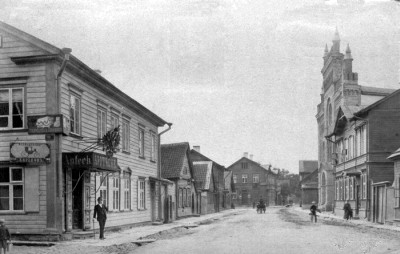
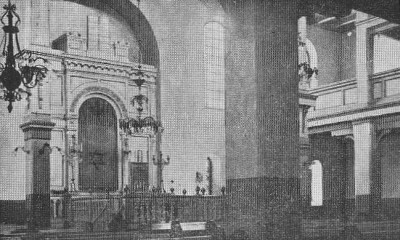
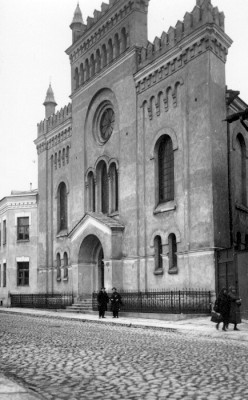
With the community growing in numbers and in wealth, a more appropriate building for services was soon needed. In 1876, a house in Maakri Street was bought. The government decision to allow the Jews holding a residence permit to purchase land in this city came at just the right moment. This opportunity was actively used by the management of the Jewish Community of Tallinn headed by an extremely educated man Yeshayohu Levinovitch, who dedicated his entire life to the Jewish Community. Several years later, at his suggestion, the management of the Community decided to build on this site a new large synagogue, which would suit the size and significance of the Community. At that time, around one thousand Jews lived in the city. In 1882 (5642 according to the Jewish chronology) the cornerstone was laid. In 1885 the building of the Large or Choral Synagogue was consecrated. At that time the Tallinn rabbi was Gurevitch. Other rabbis, who came from different cities (Yakobson, Betzalel Epshtein), also lived in Tallinn but only Gurevitch was considered to be the official rabbi of Tallinn Religious Community. The building in the Neo-Roman style, built according to the design of one of the first Estonian professional architects Nikolai Tamm, to a significant extent imitated the design of the Vienna Synagogue famous in Europe. This construction became one of the major architectural sights in the city.
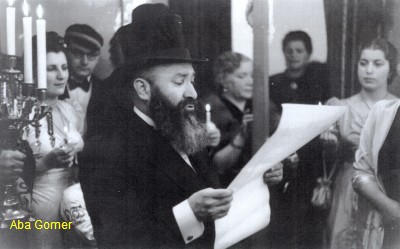
In 1909 the new Jewish cemetery in Rahumäe Street, was established and it is still used today. The old cemetery in Magasini Street was closed following complaints from the neighbouring residents, who were dissatisfied with the «malodorous miasmas» spreading from it. The cemetery was located on the marshy terrain, and the high level of terrestrial waters complicated the conduct of burials. The declaration of national independence by Estonia in 1918 had an impact on the life of local Jewry. In 1918, when 1523 Jews lived in Tallinn, the Jewish grammar school was founded, together with numerous other affinity groups. In 1926 the Estonian Jews used the right provided by the Republic of Estonia to claim cultural autonomy. It was the first precedent of this kind in the contemporary history of the Jewish people. To commemorate the fact, the Jewish National Foundation «Keren Kayemet» awarded the Estonian government with a golden diploma. The flourishing of secular Jewish culture did not leave religious life in the shadows. The premises of Tallinn Synagogue provided the location for festive services, various concerts and lectures. A small yeshiva acted under the wing of the synagogue, the high level of which is shown by the notes of the discussions, which have survived until the present day. The façade of the Large Synagogue was repeatedly depicted on postcards issued also by non-Jewish publishers: the pride of the Jewish community of Tallinn became the irreplaceable hue in the palette of the city landscape of the capital of pre-war Republic of Estonia. The Jewish population of the Estonian capital at the end of the 1930s amounted approximately to three thousand people, and that of Estonia as a whole to five thousand.
Everything changed for Estonia in 1940, when it was incorporated in the Soviet Union. The communist authorities liquidated the Jewish cultural autonomy and prohibited the activities of Jewish public organizations. During the mass deportation in June 1941 ten percent of the Jewish population of Estonia, so about five hundred people, were sent to camps and into internal exile. Many of them never came back.
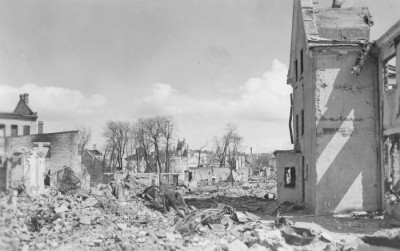 The seizure of the territory of Estonia by the troops of Nazi Germany was tragic for Jews not willing to evacuate into the Soviet hinterland. Around one thousand Jews staying under the Nazi authority were exterminated by the end of 1941 by the Germans and by Estonian collaborators. Before his death, Tallinn rabbi Abba Gomer (1897-1941) underwent humiliating derision. The building of the Tallinn synagogue, transformed by the Germans into a warehouse, was burnt down during the Soviet raid on Tallinn on the night of March 9, 1944. Its ruins were demolished in 1947.
As paradoxical as it may seem, the post-war Jewish population of Estonia increased in comparison with the pre-war period, a unique occurrence in Europe. Whereas in 1945 only 1500 Jews resided in Estonia, in 1959 in Tallinn alone there were 3714; in 1971 the figure was 3754, and in 1989, 3646. Practically all of them were Ashkenazi. Such a population growth can be easily explained. The Estonian Jews returning from the evacuation were joined by their compatriots from the other regions of the Soviet Union. They were attracted by the relatively high standard of living and by the absence of anti-Semitism at the official level.
The seizure of the territory of Estonia by the troops of Nazi Germany was tragic for Jews not willing to evacuate into the Soviet hinterland. Around one thousand Jews staying under the Nazi authority were exterminated by the end of 1941 by the Germans and by Estonian collaborators. Before his death, Tallinn rabbi Abba Gomer (1897-1941) underwent humiliating derision. The building of the Tallinn synagogue, transformed by the Germans into a warehouse, was burnt down during the Soviet raid on Tallinn on the night of March 9, 1944. Its ruins were demolished in 1947.
As paradoxical as it may seem, the post-war Jewish population of Estonia increased in comparison with the pre-war period, a unique occurrence in Europe. Whereas in 1945 only 1500 Jews resided in Estonia, in 1959 in Tallinn alone there were 3714; in 1971 the figure was 3754, and in 1989, 3646. Practically all of them were Ashkenazi. Such a population growth can be easily explained. The Estonian Jews returning from the evacuation were joined by their compatriots from the other regions of the Soviet Union. They were attracted by the relatively high standard of living and by the absence of anti-Semitism at the official level.
 Despite the fact that numerically Estonian Jewry approached the pre-war levels, it was impossible to speak about the revival of the previous Jewish life. The separate attempts undertaken in the sixties to revive it in the form of musical and dramatic associations proved short-lived. The only institutes of the communal life, functioning for the whole duration of the Soviet period, were the Jewish cemetery and the religious community, which following the loss of the synagogue building was forced to seek refuge in temporary premises. In 1945 the Bureau for Religious Affairs under the Council of Ministers of the Soviet Estonia allowed the opening of a prayer room on the second floor of the building located in Kreutzwaldi Street. Following the demolition of this building due to the construction of «Kungla» Hotel, the prayer house moved into a wooden building in Lasteaia 9, currently Magdaleena, the former warehouse building of the factory «Punane Täht».
Despite the fact that numerically Estonian Jewry approached the pre-war levels, it was impossible to speak about the revival of the previous Jewish life. The separate attempts undertaken in the sixties to revive it in the form of musical and dramatic associations proved short-lived. The only institutes of the communal life, functioning for the whole duration of the Soviet period, were the Jewish cemetery and the religious community, which following the loss of the synagogue building was forced to seek refuge in temporary premises. In 1945 the Bureau for Religious Affairs under the Council of Ministers of the Soviet Estonia allowed the opening of a prayer room on the second floor of the building located in Kreutzwaldi Street. Following the demolition of this building due to the construction of «Kungla» Hotel, the prayer house moved into a wooden building in Lasteaia 9, currently Magdaleena, the former warehouse building of the factory «Punane Täht».
At the end of the 1980s, the general rise of the national identity of the residents of Estonia provided the opportunity to revive the lost identity of local Jews. The Association of Jewish Culture was founded, the publication of Jewish periodicals was restored, and following a half-century break, the Jewish School re-opened its doors. In April 1992 the Association of Jewish Culture and The Jewish Religious Community became the co-founders of the Jewish Community of Estonia. The parcel of land on the corner of Karu Street and Aedvilja Street, which had been seized by the Soviet state in 1940, was returned to the Jewish Religious Community. Great support for the restoration of Jewish life in Estonia has been provided by the American charity organization «Joint», as well as by the communities of Finland and Sweden.
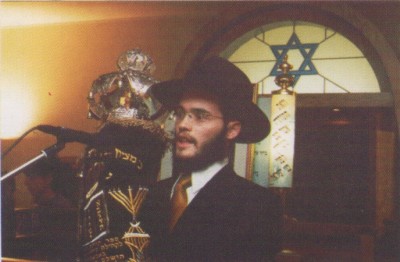 In the last year of the 20th century, the rabbi Efraim Shmuel Kot arrived in Estonia – the first rabbi in the post-war history of Estonian Jewry. His activities were made possible with the financial support of the «Or Avner» Foundation headed by Levi Levaev and the Rohr Family Foundation. On December 21, 2000, with the participation of Mart Laar, the Prime Minister of Estonia at that time, the new premises of Tallinn Synagogue opened on the second floor of the Jewish Community Centre. The arrival of a rabbi in Tallinn was a significant milestone in the revival of the full-blooded Jewish life in the Jewish community of Estonia. Alongside the Shabbat prayers and holiday services, which did take place in Soviet times, Tallinn sees increasingly more often the rites of circumcision – Brit Milah, the Jewish religious coming-of-age, Bar Mitzvah and Bat Mitzvah, and the marriage ceremony Chuppah. The tradition of studying the Holy Books was restored, the synagogue choir was established, and the opportunity was seized for acquiring the Mezuzah, Hanukkah and Shabbat candlesticks and Judaica souvenirs.
In the last year of the 20th century, the rabbi Efraim Shmuel Kot arrived in Estonia – the first rabbi in the post-war history of Estonian Jewry. His activities were made possible with the financial support of the «Or Avner» Foundation headed by Levi Levaev and the Rohr Family Foundation. On December 21, 2000, with the participation of Mart Laar, the Prime Minister of Estonia at that time, the new premises of Tallinn Synagogue opened on the second floor of the Jewish Community Centre. The arrival of a rabbi in Tallinn was a significant milestone in the revival of the full-blooded Jewish life in the Jewish community of Estonia. Alongside the Shabbat prayers and holiday services, which did take place in Soviet times, Tallinn sees increasingly more often the rites of circumcision – Brit Milah, the Jewish religious coming-of-age, Bar Mitzvah and Bat Mitzvah, and the marriage ceremony Chuppah. The tradition of studying the Holy Books was restored, the synagogue choir was established, and the opportunity was seized for acquiring the Mezuzah, Hanukkah and Shabbat candlesticks and Judaica souvenirs.
The Religious Community, The Tallinn Jewish School and The Community Centre in Karu Street are the representational centre of the entire Jewish life in Estonia. At the beginning of the 21st century it became apparent to everyone that Tallinn could not be the only EU capital without a synagogue building.